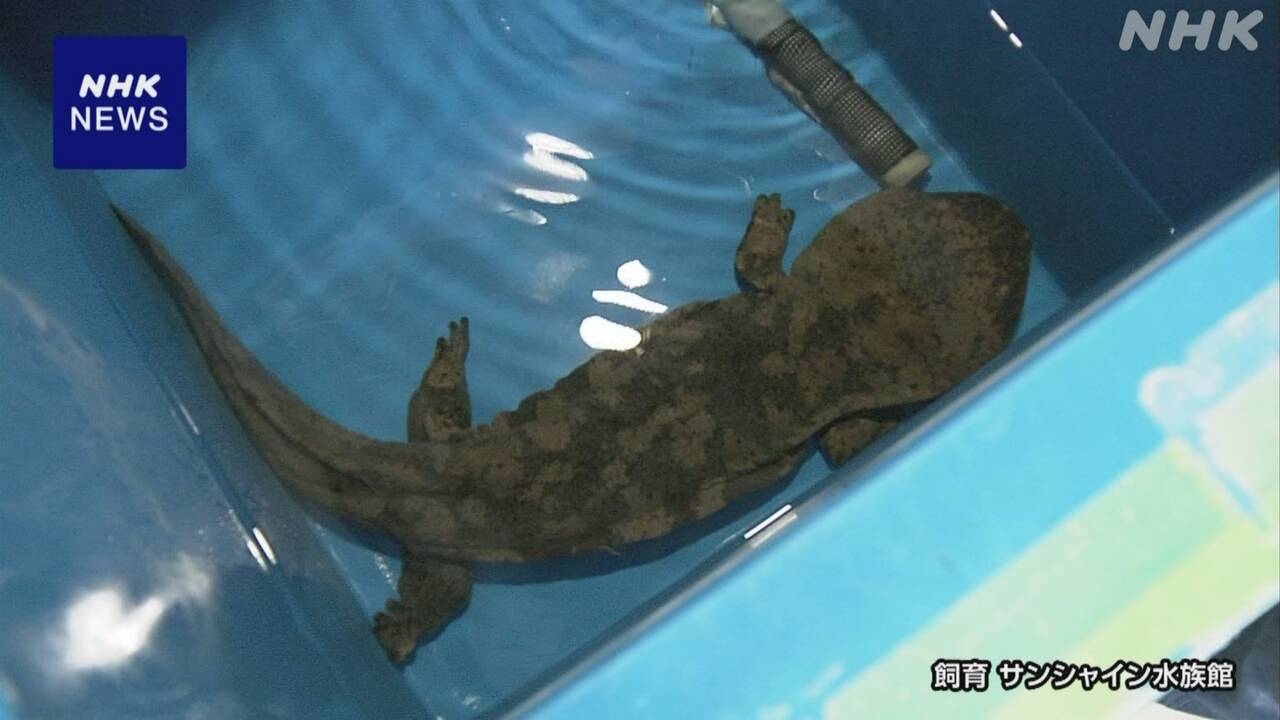A type of giant salamander endemic to China, which is listed as extremely endangered on the IUCN Red List of the International Union for Conservation of Nature, has been found being kept in an aquarium in Japan, and Kyoto University and other institutions are planning to clone individuals in the future. We are committed to taking steps to prevent extinction.
What was discovered is the Sligo giant salamander, an endemic species recorded from a limited area in southern China.
Due to being hunted in large numbers for food, the species has declined dramatically and is listed as an extremely endangered species on the IUCN Red List.
A research team led by Professor Kanto Nishikawa of Kyoto University collected 73 wild and captive specimens from various parts of the country that are thought to have their roots in China, in order to study the hybridization between Japan's native giant salamanders and closely related species brought over from China. When we investigated the genetic information of these animals, we found that four of them were Sligo giant salamanders.
Two of the males were kept at Sunshine Aquarium in Ikebukuro, Tokyo, and in the backyard of Asa Zoological Park in Hiroshima, respectively.
According to Professor Nishikawa, the ``Sligo giant salamander'' is thought to be already extinct in its native China, and ``it is possible that it is kept in other aquariums, zoos, and even outside Japan, so we are looking for any remaining individuals.'' I want to look for it," he said.
The research team plans to use the stored female cells to create cloned individuals in order to prevent extinction.
Breeding staff: “I can’t believe it. We will cooperate with research and surveys.”
The Sligo Giant Salamander is kept in the backyard of the Sunshine Aquarium in Ikebukuro, Tokyo, and is usually not open to the public.
According to Hiroteru Sakiyama, a breeding staff member, this individual was imported in 1989 and has been kept in an aquarium for 25 years since 1999, and its current size is about 1 meter 25 centimeters.
Speaking about the Sligo giant salamander, who is seven years his senior when he joined the company in 2006, Sakiyama says, ``It's a creature that usually stays quiet and still, but when it eats food such as fish, it gulps down quickly. So, that gap is interesting.'' He went on to explain, ``When I first joined the company, I was also in charge of feeding the animals, so to be honest, I was surprised and in disbelief when I found out that it was a precious species.'' There are also talks of proceeding with the investigation, so I would like to actively cooperate with them."

